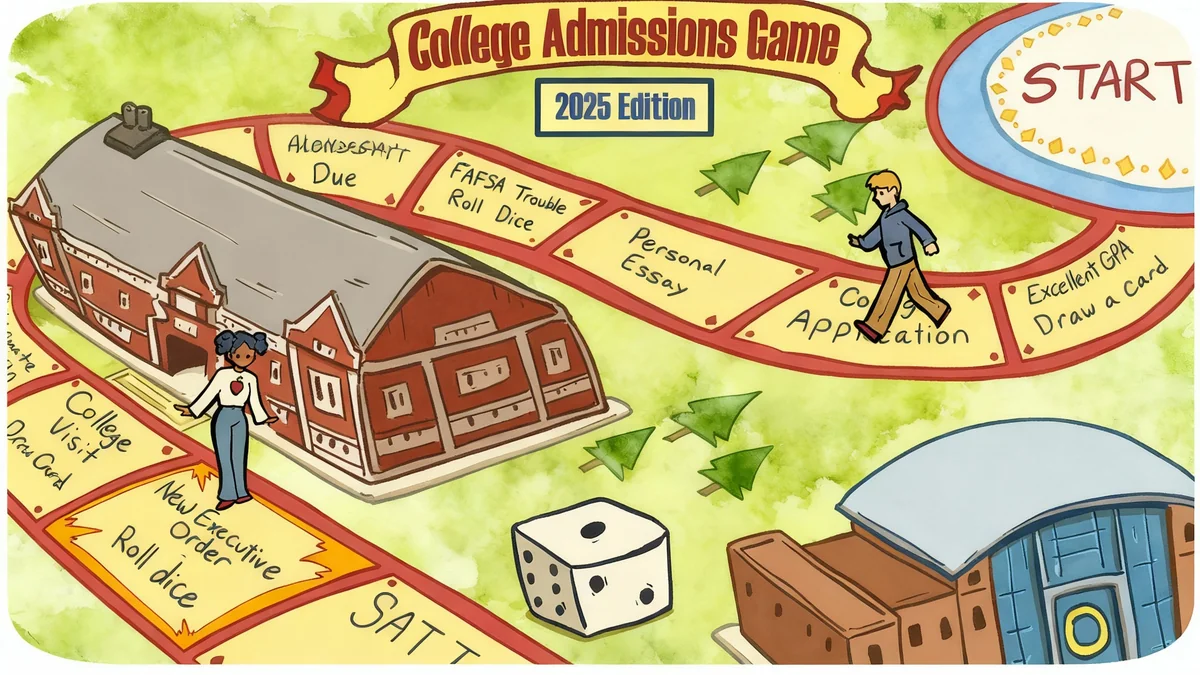Two school districts in Clark County, Wisconsin, are formally exploring a merger to address shared challenges, including declining enrollment and financial pressures. The Loyal and Greenwood School Districts have scheduled a binding referendum for the November 2026 ballot, which will allow voters to decide on the proposed consolidation.
If the measure is approved, the two districts, located less than ten miles apart, would officially merge into a single entity by July 2028. The move aims to enhance educational resources for students by creating a more efficient and sustainable operational model.
Key Takeaways
- The Loyal and Greenwood School Districts will hold a binding vote on consolidation in November 2026.
- A successful vote would lead to a full merger by a target date of July 1, 2028.
- Primary drivers for the proposal include declining student enrollment, staffing difficulties, and financial constraints.
- The districts already share resources, including sports teams, some classes, and transportation services.
Districts Confront Common Rural Challenges
The proposal to consolidate stems from a series of persistent issues common to many rural school districts. Leaders from both Loyal and Greenwood point to declining student enrollment as a primary factor. Together, the districts serve a combined total of just under 1,000 students, and a shrinking student base puts pressure on per-pupil state funding formulas.
Chris Lindner, Superintendent of the School District of Loyal, highlighted the financial reality facing the districts. “Obviously, the state budget helps us out in some areas, but it isn’t enough,” he explained, noting that current funding levels are insufficient to meet rising operational costs.
This financial strain is compounded by difficulties in recruiting and retaining qualified staff, another challenge prevalent in smaller, rural communities. By combining resources, the districts hope to create a more attractive employment environment and ensure classrooms are led by certified educators.
A Unique Demographic Factor
Beyond typical enrollment and funding issues, the districts face a unique demographic situation that impacts public school population counts. According to Joe Green, District Administrator for the School District of Greenwood, the area has a significant Amish and Mennonite community.
“We have a larger Amish and Mennonite population in the district that does not attend public school,” Green stated. “They have their own schools.”
This means a substantial number of school-aged children within the districts' geographic boundaries are educated in private parochial systems, further affecting the enrollment numbers that determine state aid for the public schools.
Context: School Consolidation in Wisconsin
School district consolidation is a tool used by communities in Wisconsin and across the U.S. to address demographic and financial shifts. It is often considered when districts face long-term enrollment decline, which can lead to reduced state funding, difficulty offering a wide range of courses, and challenges in maintaining facilities. While mergers can offer greater efficiency, they also involve complex decisions about school identity, facility usage, and community representation.
The Proposed Benefits of a Merger
Administrators from both districts believe that forming a single, unified district would provide substantial benefits for students and taxpayers. The primary goal is to expand educational opportunities. A larger student body could support a wider variety of advanced placement (AP) courses, career and technical education (CTE) programs, and extracurricular activities that neither district can sustain on its own.
Joe Green emphasized the focus on student enrichment. “We’re trying to give our kids as many opportunities as we can,” he said. The belief is that combining two stable districts can create a stronger one.
“I truly do believe that we have a good school district in Greenwood and a good district in Loyal, and putting two good districts together really gives us an opportunity to be better,” Green added.
Achieving Cost-Effectiveness
Significant financial efficiencies are also a key motivator. Superintendent Lindner explained that merging would eliminate redundant administrative and operational costs. Many services that both districts currently pay for separately could be covered by a single payment.
“Greenwood is paying something. Loyal is paying something,” Lindner noted. “As one district, you would pay once. I think that would be very cost-effective for that single district.” These savings could then be redirected toward classroom instruction, technology upgrades, and student support services.
By the Numbers: Loyal & Greenwood
- Distance Apart: Less than 10 miles
- Combined Student Population: Just under 1,000
- Referendum Date: November 2026
- Proposed Merger Date: July 2028
A Foundation of Existing Collaboration
The path to consolidation is made smoother by the fact that the Loyal and Greenwood districts are already close partners. This existing relationship provides a strong foundation for a potential merger and gives the communities a preview of how a unified system might function.
Current cooperative efforts include:
- Sports Co-ops: Students from both districts already compete together on combined athletic teams, fostering a shared identity.
- Shared Classes: The districts share some academic courses, allowing students to access a broader curriculum than either school could offer alone.
- Bus Service: Both districts use the same transportation provider, streamlining routing and logistics.
Furthermore, both districts are in a healthy financial position. Green confirmed that neither district is carrying debt. They also have similar mill rates, which is the rate at which property is taxed for school funding. This financial alignment simplifies the process of combining budgets and establishing a new, unified tax structure.
The Road Ahead: A Voter Decision
With the groundwork laid, the final decision rests with the communities. A joint board representing both districts officially approved placing a binding referendum on the November 2026 general election ballot. This timeline provides nearly two years for district leaders to engage with parents, staff, and taxpayers to discuss the details of the proposal and answer questions.
Green acknowledged that the process can seem daunting to residents. “There’s not a lot of districts that have done this recently,” he said. “I think it raises concern for people because of the unknown.”
However, he expressed confidence that the potential to create a stronger, more resilient school system will be a compelling reason for voters to support the merger. If the referendum passes, the districts will begin the formal process of uniting, with the goal of operating as a single district for the 2028-2029 school year.





